Klaviyo
This integration attaches your survey response data to Klaviyo customer profiles.
Setup
To enable your Klaviyo integration, click the Integrations tab in your Fairing app. Locate Klaviyo and click "Turn On"
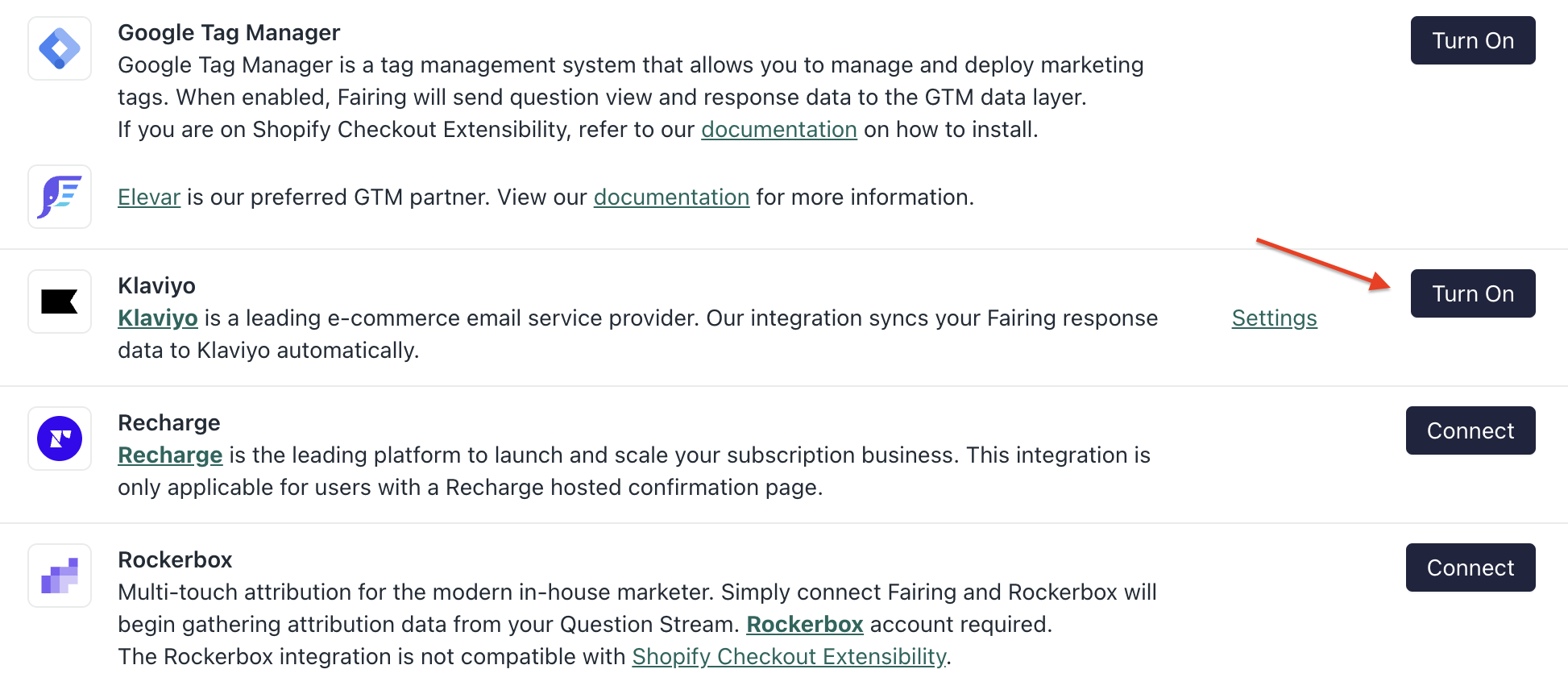
Enable Klaviyo Integration
On the following screen, you'll be asked to input a Klaviyo Private API key.
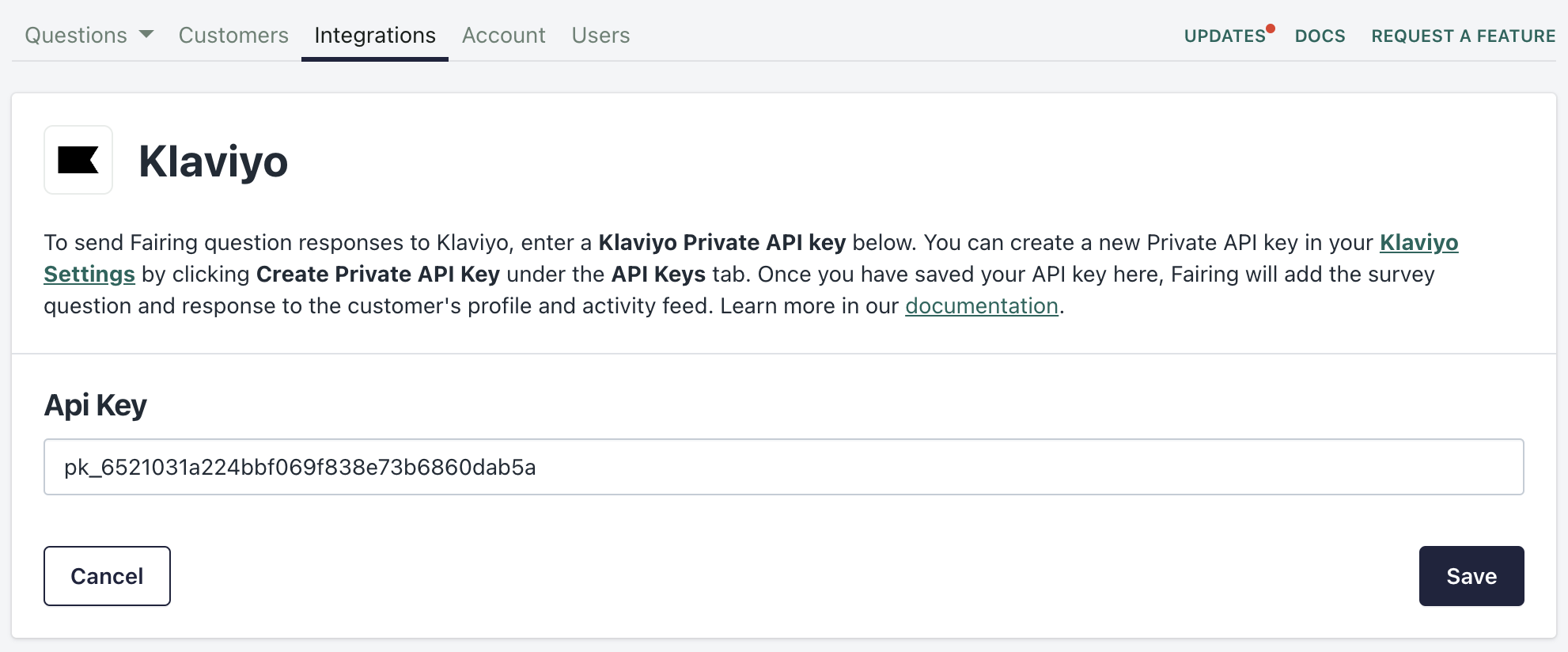
Input Klaviyo API Key
Once the integration has been turned on, access this screen again by clicking 'Settings' from the main Integrations page.
Create a Klaviyo Private API Key
You can create a Private API key in your Klaviyo account by clicking Create Private API Key on this page.
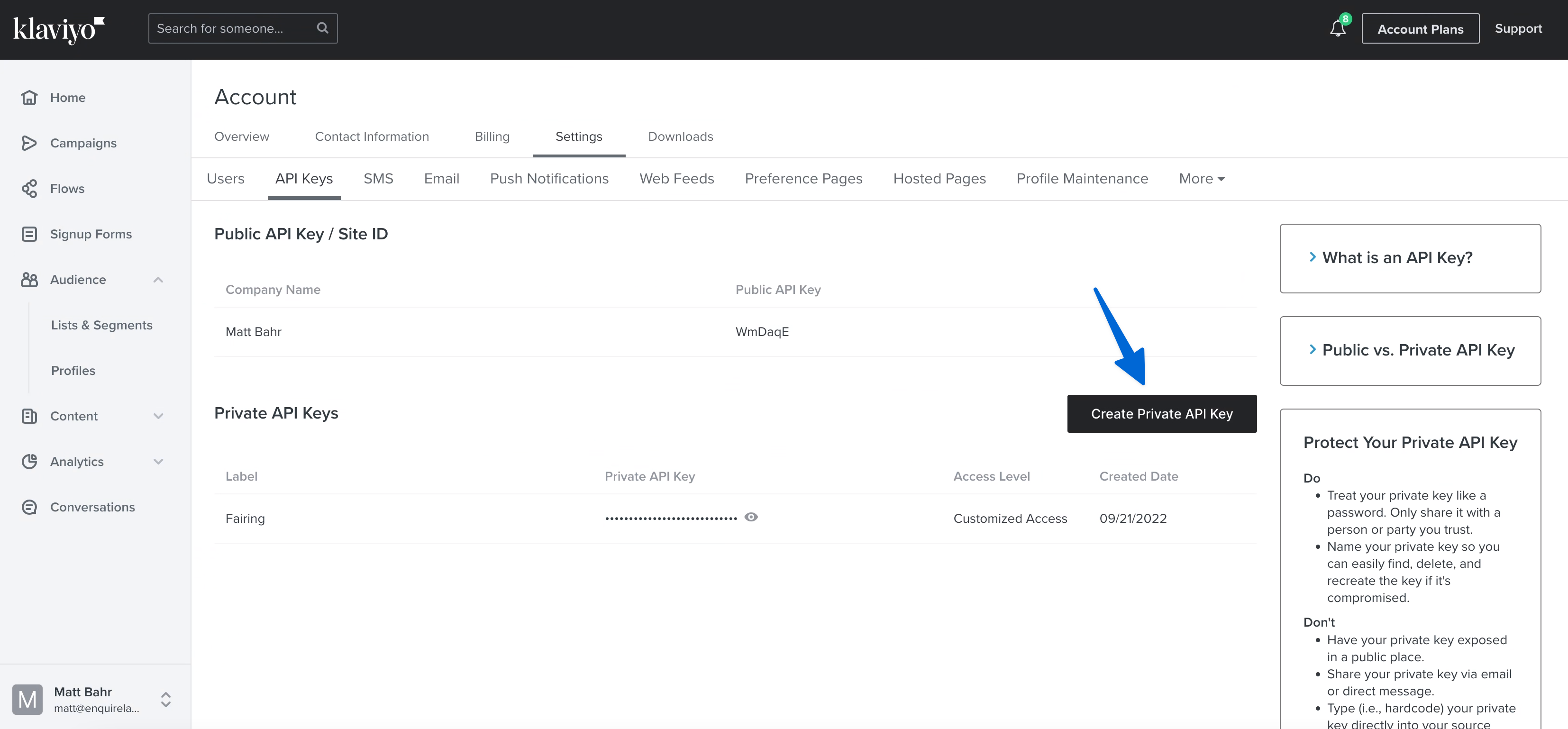
On the following page title your Private API Key, Fairing. Click Custom Key and change the Events API Scope and the Profiles API Scope to Full Access. To avoid any potential future access issues, you can alternatively select Full Access Key.
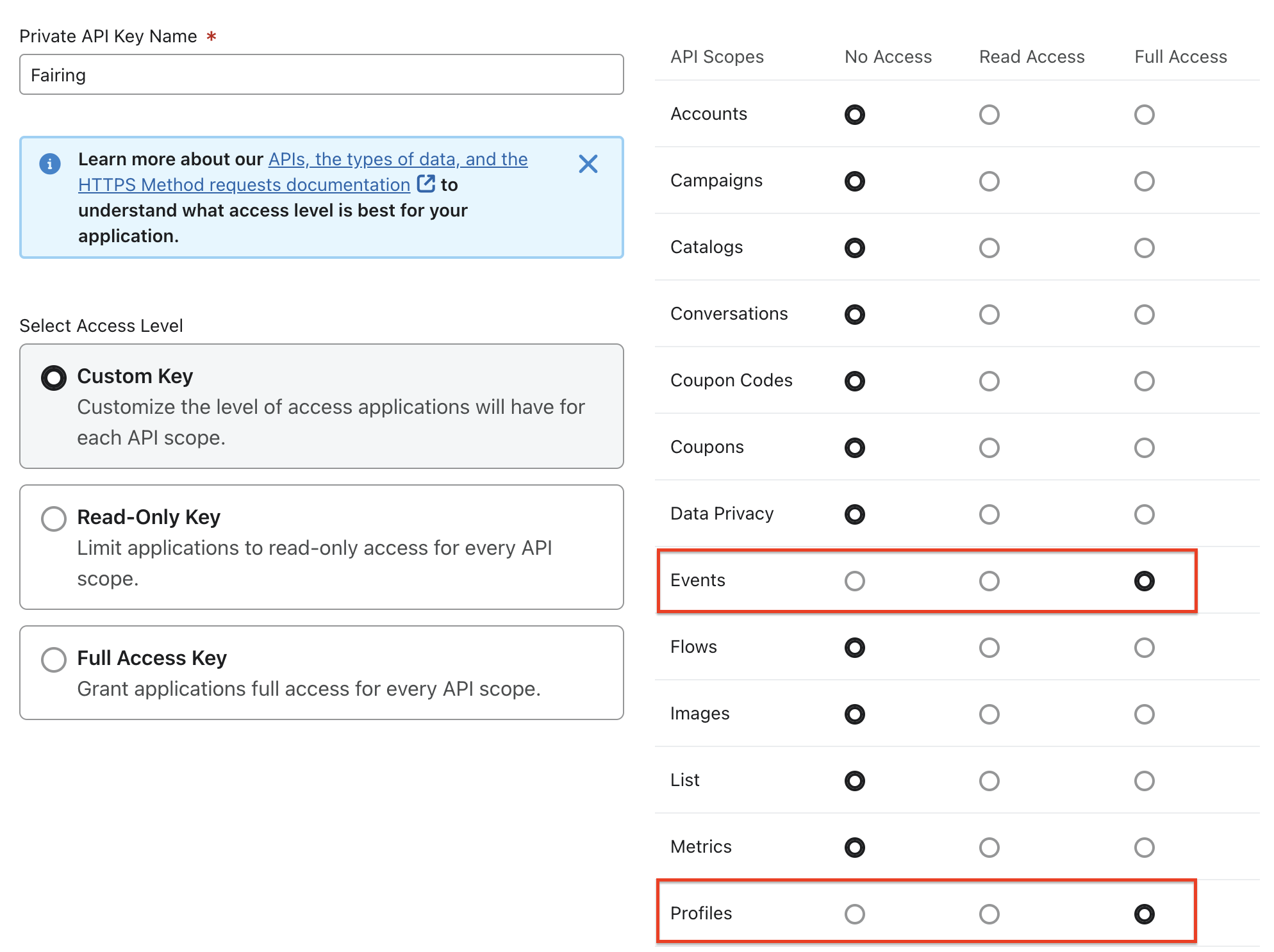
Grant API Scopes
Click Create and copy your Private API Key into your Fairing Klaviyo settings.
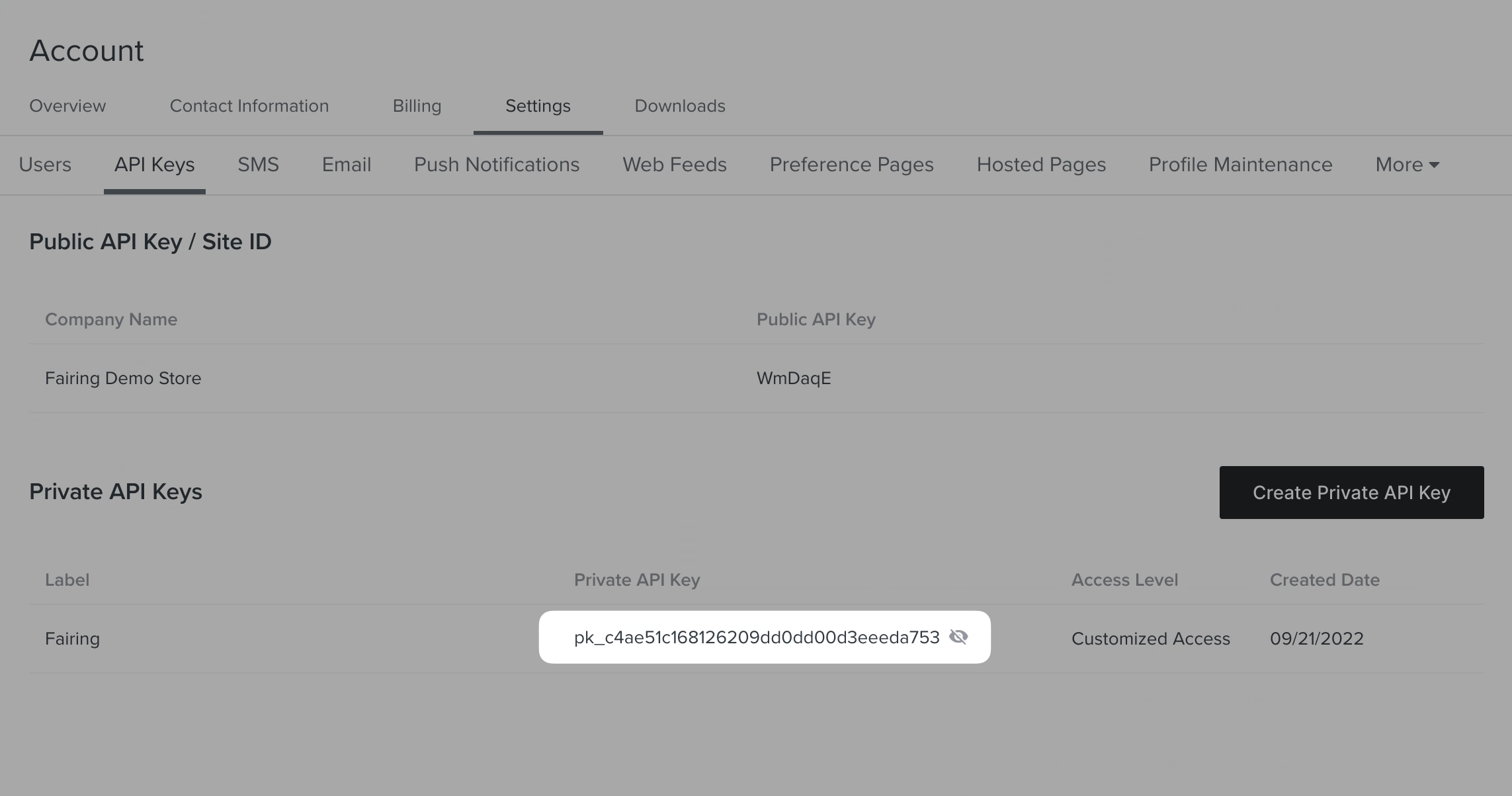
Does my API Key have the correct scopes?
You can view existing API Keys and their granted access level under Settings >> Account >> API Keys in the 'Private API Keys' section. If your existing Fairing API Key does not have the correct scopes (Full Access to Events and Profiles), you will need to delete the key and create a new one with the correct scopes. API Keys cannot be edited in Klaviyo once they are created. Once the new key with the correct scopes is created, enter and save the key in Fairing (refer to Setup section above).

API Access Level
Viewing Question Stream Responses in Klaviyo
Question Stream responses are synced to two locations in the Klaviyo Profile: the Activity log and Details >> Custom properties. Once you've entered your Klaviyo Private API Key and enabled the integration, you'll see data appear as you receive survey responses.
Activity Log
We send response data to the profile activity log under the event Fairing: Responded to Question.
Below is an example.
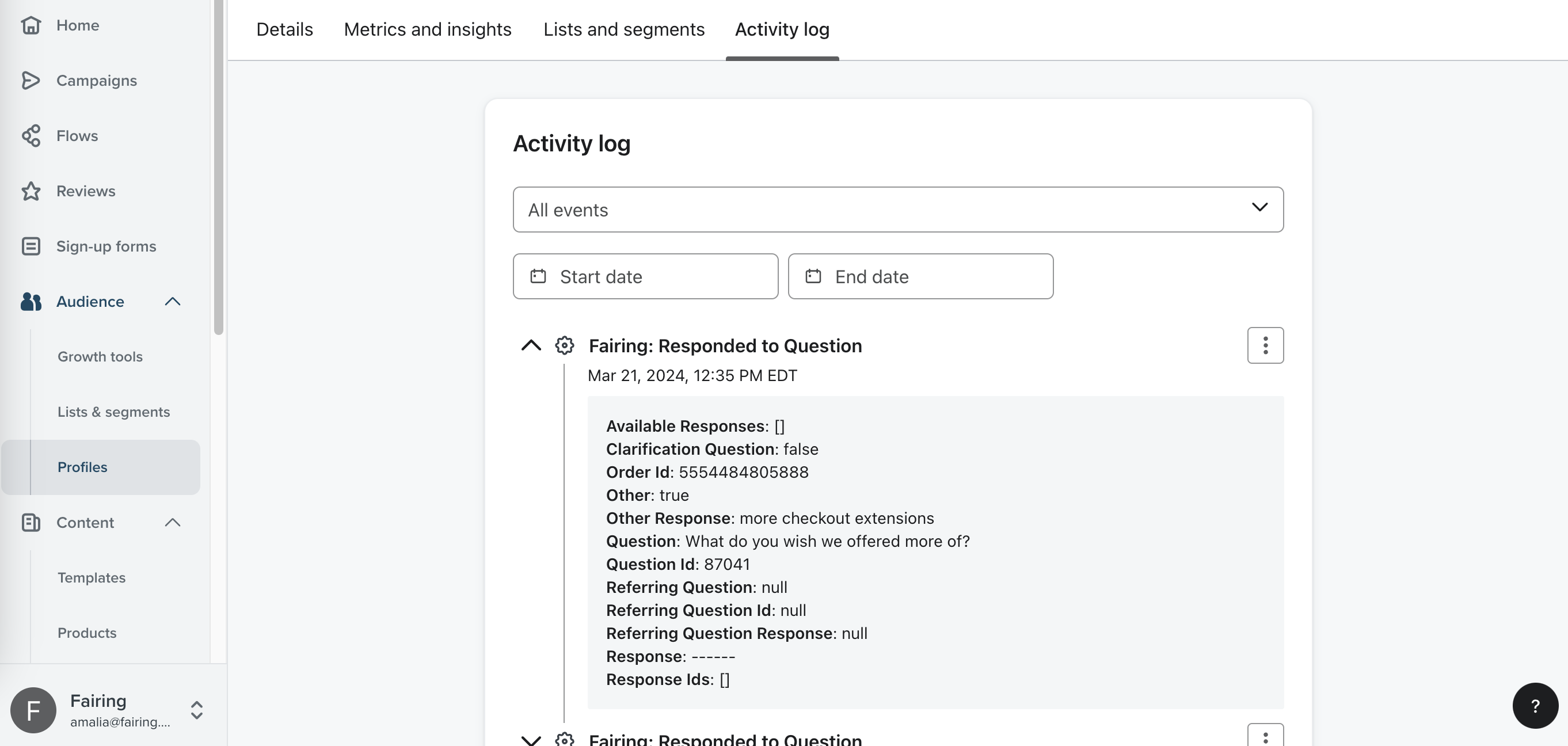
Event Information
The below is the list of metadata sent to Klaviyo.
-
available_responsesstring - Options shown to your customer when the question is shown.
-
order_idstring - The ID of the order associated with this response.
-
otherboolean - Indicates if the response was free-form text or a predefined option.
-
other_responsestring - If the response was free-form text, the value of the text.
-
questionstring - The text value of the question associated with this response.
-
question_idstring - The ID of the question associated with this response.
-
referring_questionstring - If the question associated with this response is a clarification question, the text value of the question immediately preceeding this one.
-
referring_question_idinteger - If the question associated with this response is a clarification question, the ID of the question immediately preceeding this one.
-
referring_question_responsestring - If the question associated with this response is a clarification question, the text value of the response provided to the question immediately preceeding this one.
-
responsestring -
The text value of the response. This will be
nullif the response was free-form text. -
response_idstring - The ID of the response if it was not free-form text.
Customer Profiles
In addition to sending response data to the activity feed, we also add it to customer profiles properties. This information lacks additional syntax, like order number, and can be overwritten so we don't recommend building automations off of these properties.
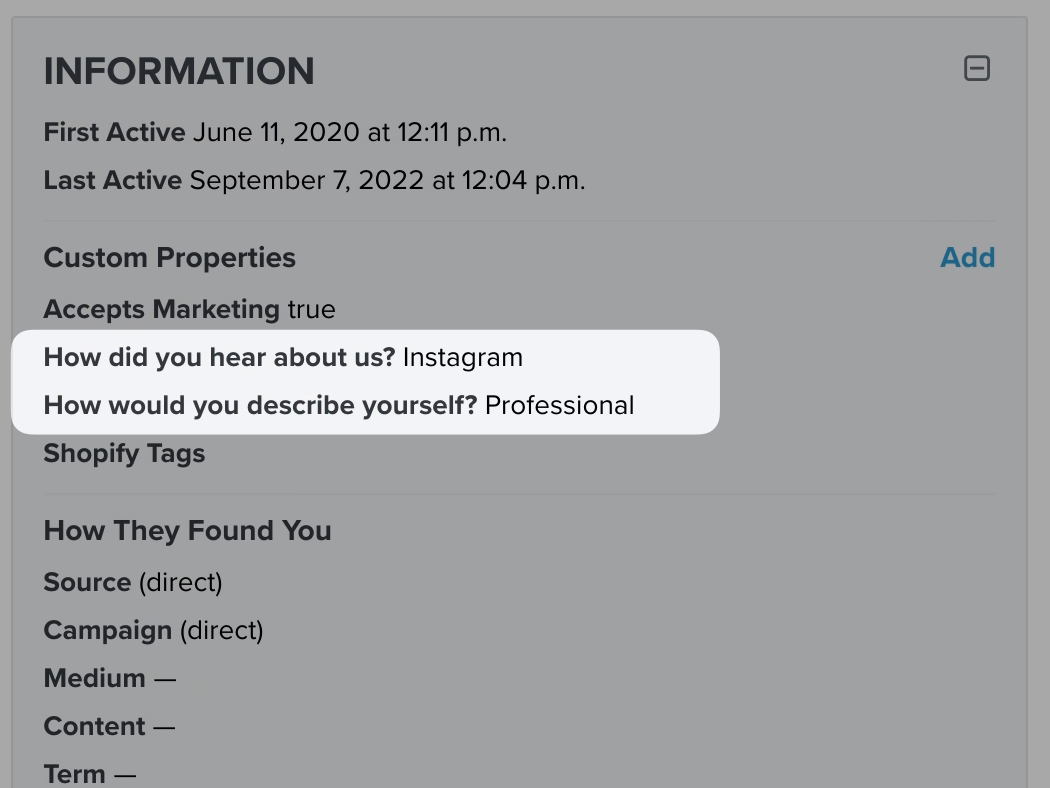
Create Custom Flows Based on Question Stream Responses
To create Flows based on Question Stream responses, make sure you've followed the instructions above, then click Lists & Segments in your Klaviyo dashboard.
On the following page click Create List / Segment. Then click Segment.
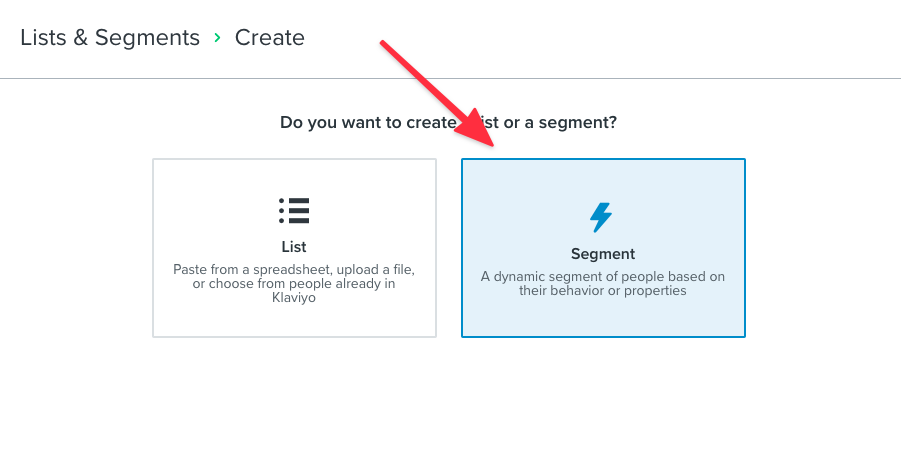
On the following page, give your segment a name. In this example, we titled it "Professionals". Then:
- Select What someone has done (or not done) under Select a Condition
- Under Has select "Fairing: Responded to Question" at least once, over all time
- Under response, select the Response you're looking to target.
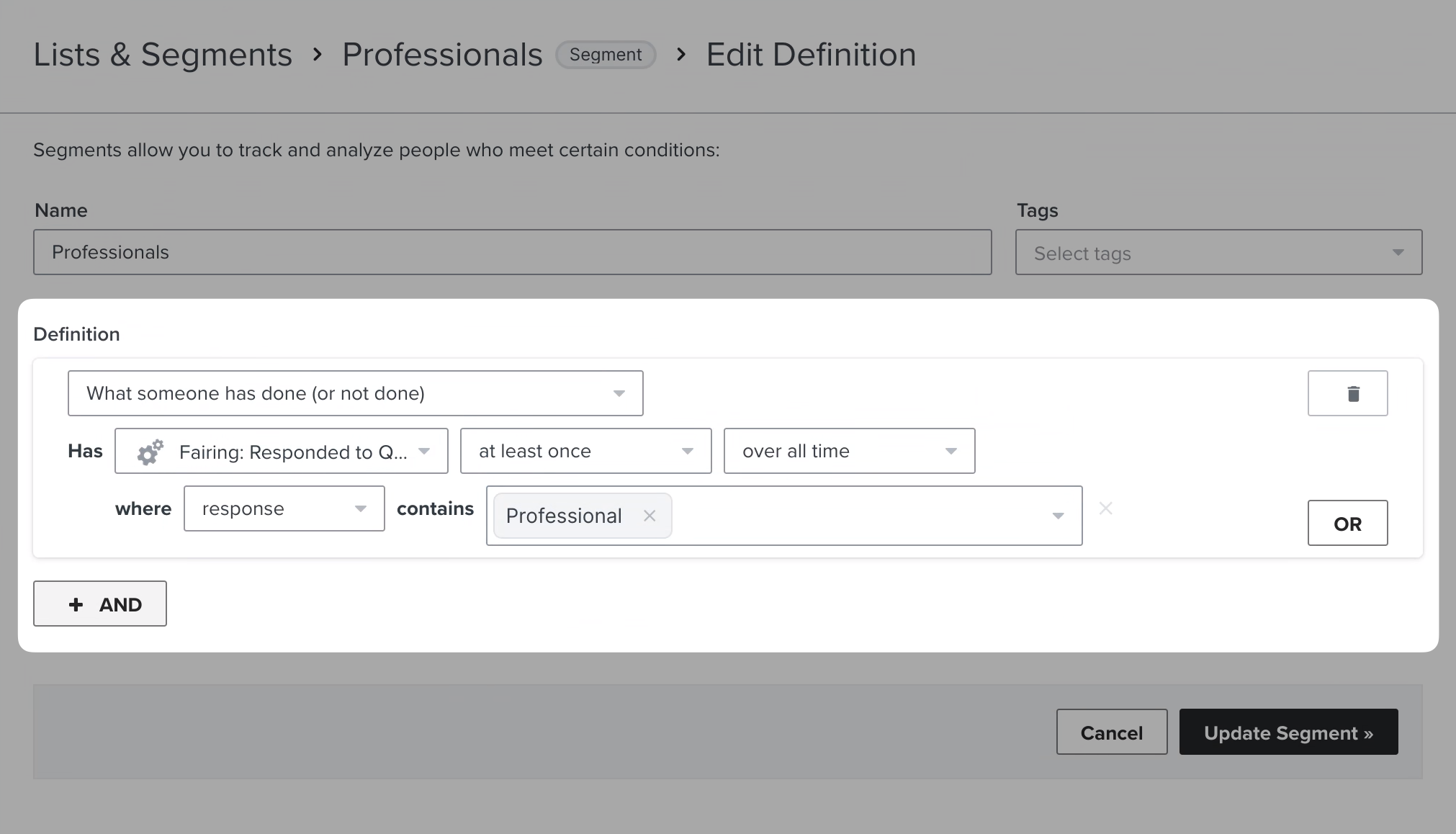
Now that you have a Segment built of customers with specific responses, you can now build out a Klaviyo Flow targeting those users. Click Flow, then Create from Scratch.
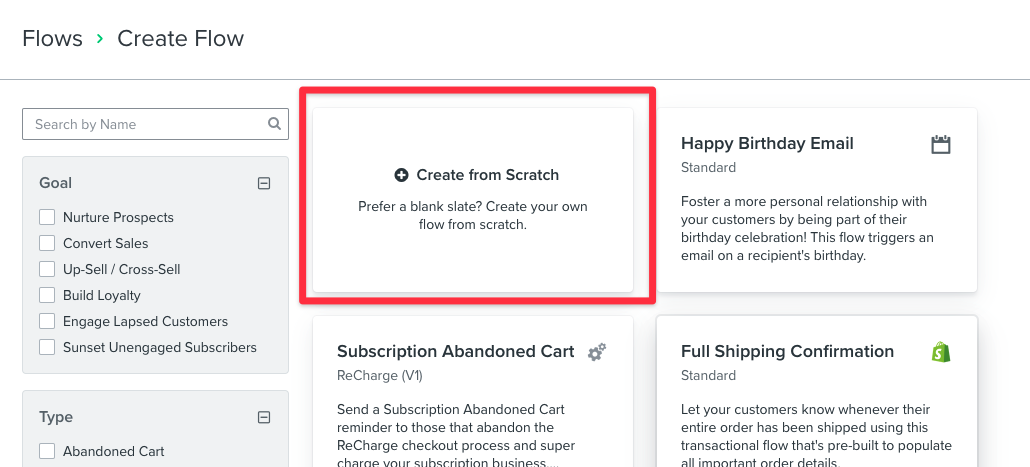
Create Flow from scratch
On the following page, after titling your Flow, click Segment. Find the segment you created in the previous step. You're now all set to start building out Flow targeting specific users who answered a survey specific response!
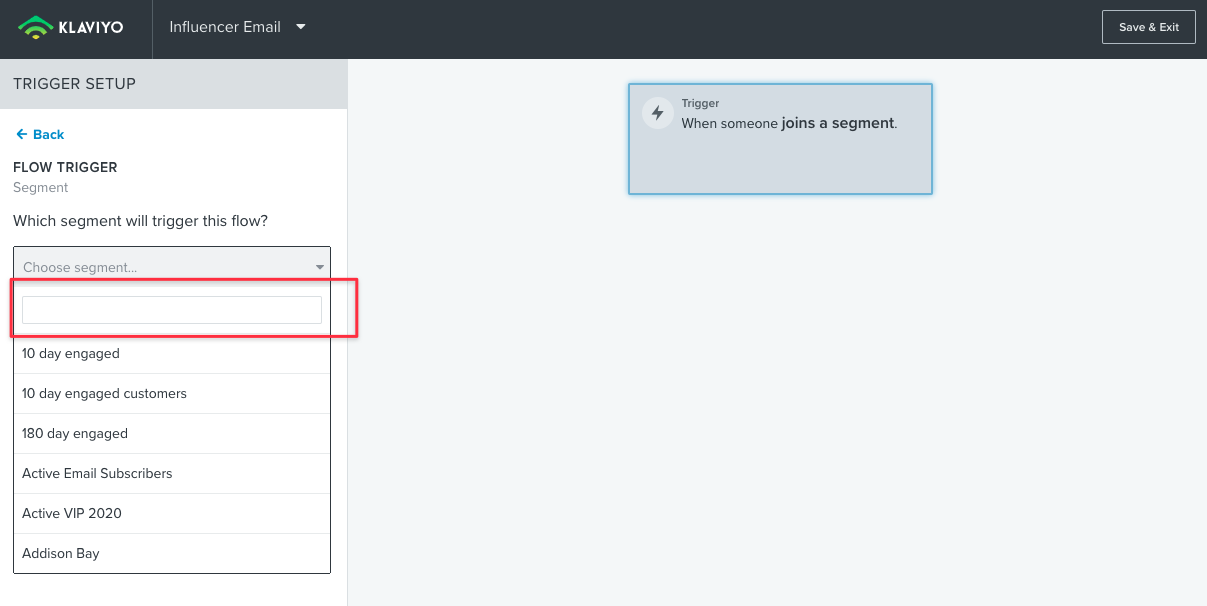
Create Klaviyo Flow
Send Email to Users who Haven't Completed Survey
To send an email to customers who haven't completed a survey, you need to create a new Flow that triggers when a customer places an order. You can add a Delay so they're not getting an email immediately after they place their order.
When setting up the Flow, add a Flow Trigger with the following parameters: Properties about someone, Dimension: [insert your question title], Is not set. By adding this, you've segmented users who've placed and order and have not filled out the question you set. Make sure you've uploaded all your Fairing data to Klaviyo so it's up to date (this is only needed if you didn't enable our Klaviyo integration when you launched your survey or Question Stream).
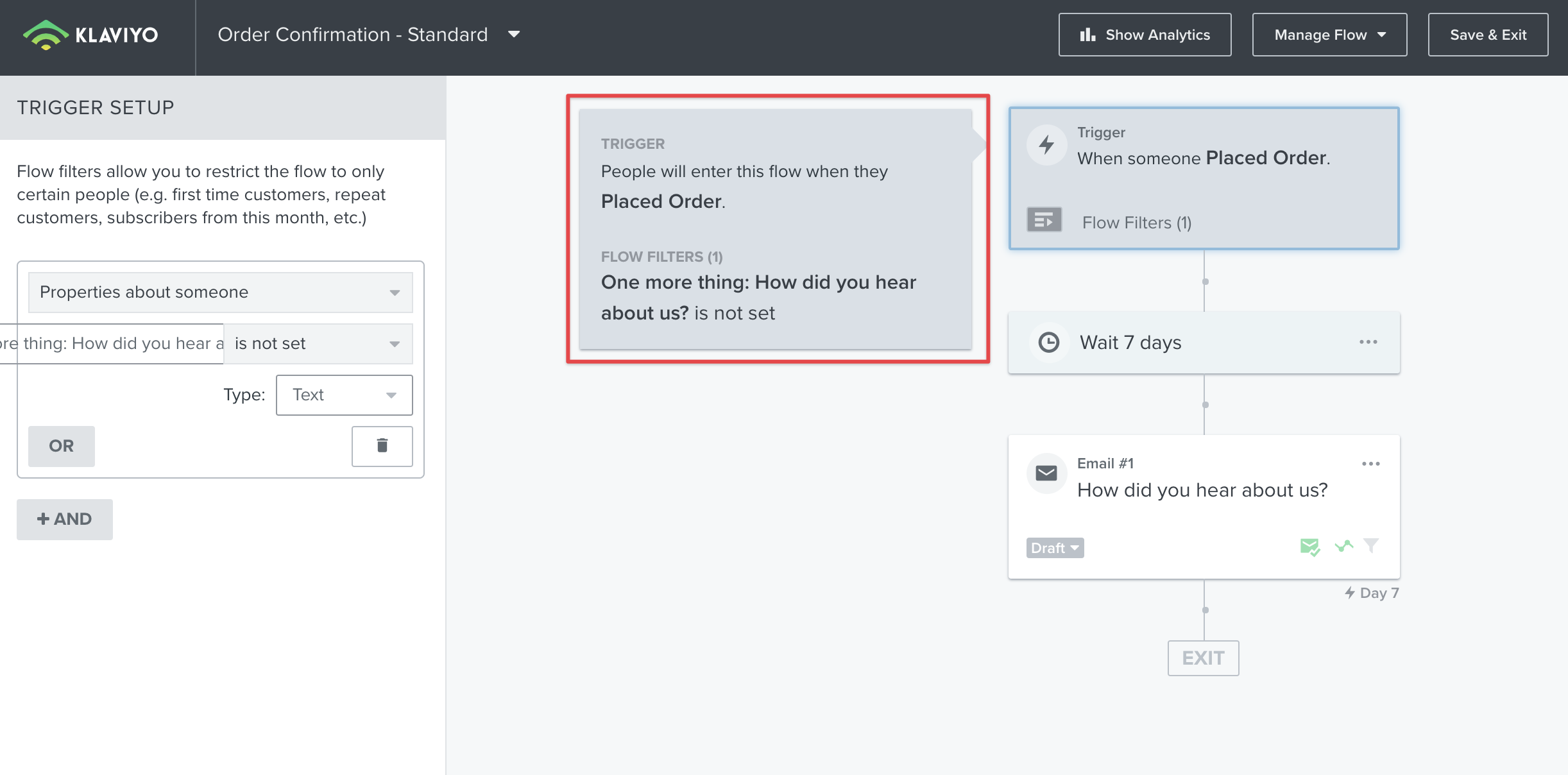
Next determine your email Delay (we recommend 1-2 days, so the order is still fresh in your customers' mind).
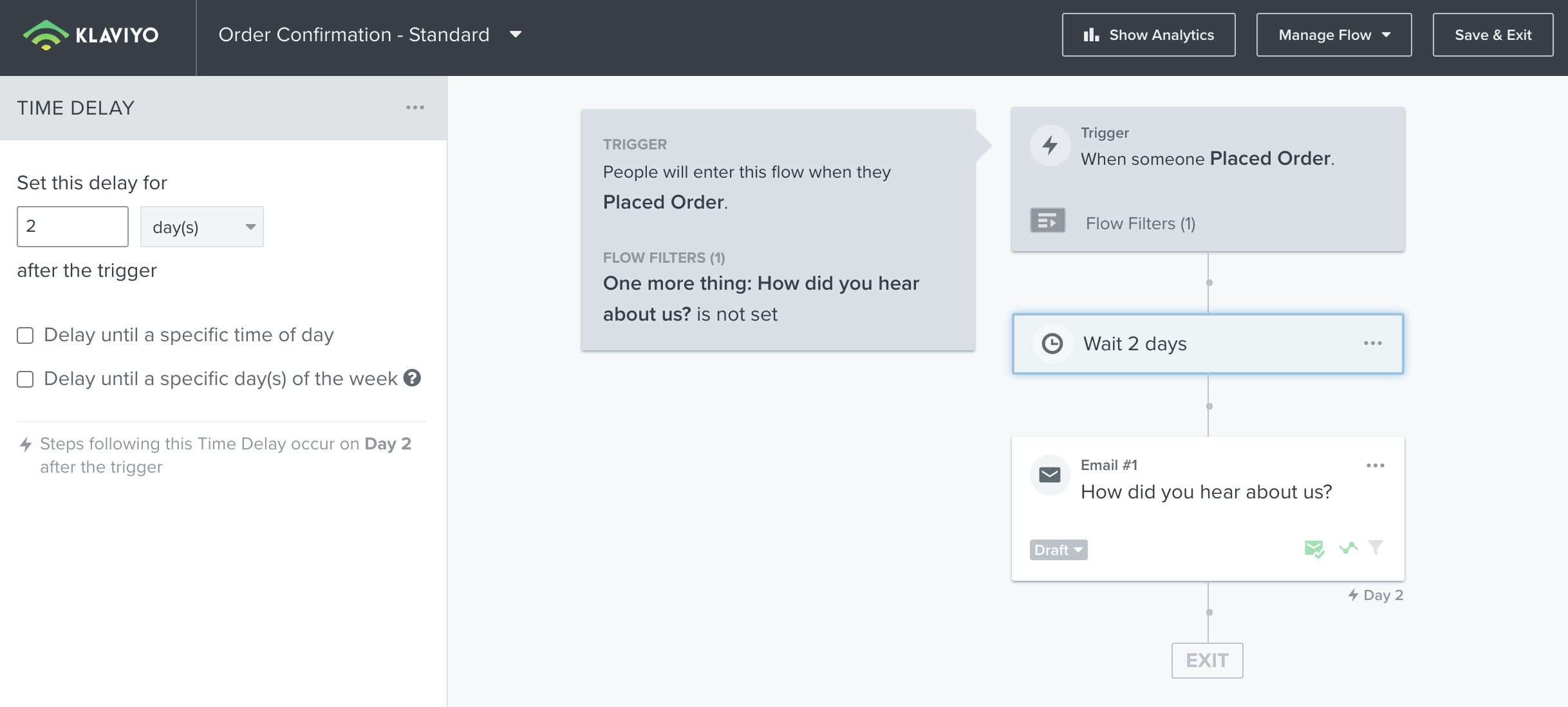
Next build your survey content and add a link with Protocol:
As always, be sure to test extensively when sending emails to customers!
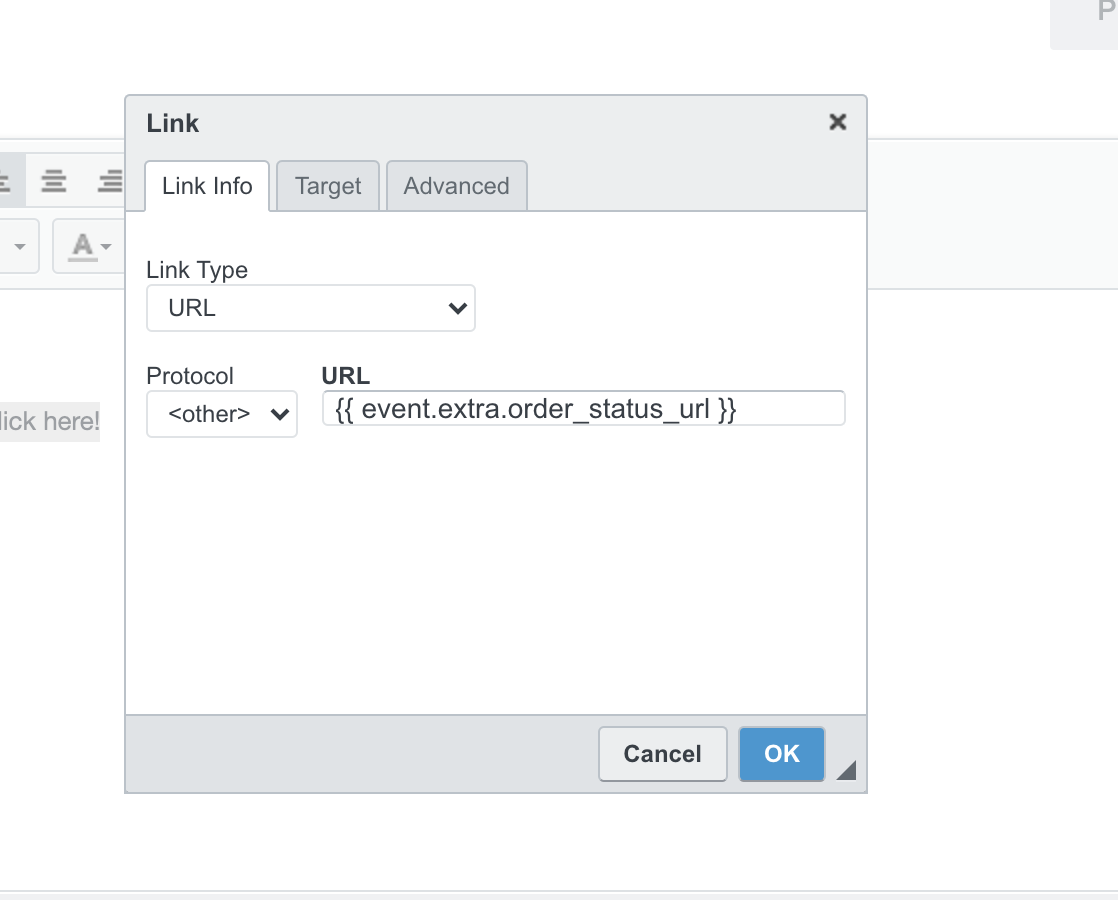
Importing Historical Data
To import your historical Fairing survey response data into Klaviyo, start by exporting the required date range. Follow this link for more information on exporting your data.. Note: the data will start flowing as soon as you connect Klaviyo and Fairing, therefore, all data recorded before the connection will not be in Klaviyo.
Once you have your survey data set, clean it up to include the headers email and question (the actual question you asked, e.g., how did you hear about us). This is all you need to import your data to Klaviyo.
In Klaviyo, navigate to your master list and click Manage List, and then Import Contacts. More information on importing Klaviyo's support documentation.
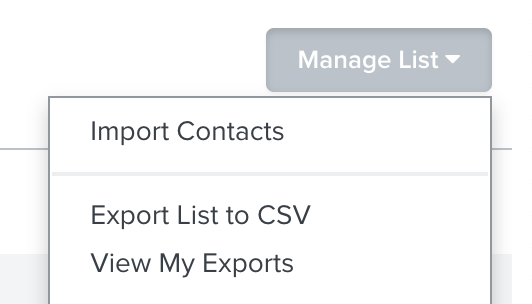
Updated 3 months ago
